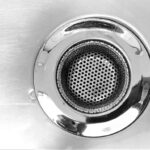Keeping your car running smoothly means paying attention to all its fluids, and transmission fluid is a big one. Think of it like the lifeblood of your transmission – it keeps everything lubricated, cool, and working properly. Checking it regularly can help you spot problems early and avoid expensive repairs down the road. Don’t worry, it’s not as complicated as it sounds! This guide will walk you through the process, step-by-step.
Why Check Your Transmission Fluid?
Your transmission is a complex system of gears that allows your car to shift smoothly and efficiently. Transmission fluid plays several crucial roles:
- Lubrication: It reduces friction between moving parts, preventing wear and tear.
- Cooling: It helps dissipate heat generated by the transmission, preventing overheating.
- Hydraulic Pressure: It transmits power within the transmission to enable shifting.
- Cleaning: It carries away debris and contaminants, keeping the transmission clean.
Over time, transmission fluid can break down, become contaminated, or leak. When this happens, your transmission might not shift as smoothly, or it could even overheat and fail. Regularly checking the fluid allows you to catch these problems early and take corrective action, like topping it off or changing the fluid altogether.
Safety First!
Before you start, remember safety is key!
- Hot Engine: Be careful around a hot engine. Let it cool down for a bit before working on it to avoid burns.
- Parking Brake: Always engage the parking brake.
- Wheel Chocks: Consider using wheel chocks for extra safety, especially if you’re working on a sloped surface.
How to Check Your Transmission Fluid: Step-by-Step
The exact method for checking transmission fluid varies depending on your car’s make and model. However, here’s a general guide that applies to most vehicles with a transmission dipstick.
- Gather Your Supplies: You’ll need a clean rag or paper towel.
- Locate the Dipstick: The transmission fluid dipstick is usually located under the hood, often near the engine. It’s typically marked with a transmission fluid symbol or labeled “Transmission.” If you’re unsure, consult your owner’s manual.
- Warm Up the Engine (Sometimes): Some vehicles require the engine to be warmed up before checking the fluid. Consult your owner’s manual to see if this is necessary for your car. If so, run the engine for a few minutes.
- Engage Parking Brake: Make sure your parking brake is firmly engaged.
- Shift to Neutral or Park: The owner’s manual will specify whether to check the fluid in Neutral or Park. Make sure the car is in the correct gear.
- Remove the Dipstick: Pull the dipstick out completely.
- Wipe the Dipstick: Use a clean rag or paper towel to wipe the dipstick clean. This is important for getting an accurate reading.
- Reinsert the Dipstick: Fully reinsert the dipstick into the tube. Make sure it’s seated properly.
- Remove the Dipstick Again: Pull the dipstick out one last time.
- Check the Fluid Level: Look at the end of the dipstick. There should be markings indicating the “Full” and “Low” levels. The fluid level should be between these two marks.
- Check the Fluid Condition: Observe the color and smell of the fluid. Healthy transmission fluid is typically red or pinkish and has a slightly sweet smell. Dark brown or black fluid, or fluid that smells burnt, indicates a problem.
- Top Off (If Needed): If the fluid level is low, add transmission fluid until it reaches the “Full” mark. Use the type of transmission fluid specified in your owner’s manual.
- Replace the Dipstick: Securely replace the dipstick.
What if I Don’t Have a Dipstick?
Some newer vehicles don’t have a transmission dipstick. In these cases, you’ll need to take your car to a qualified mechanic to have the transmission fluid level checked. These transmissions usually have a fill plug that the mechanic will access to verify the level.
Understanding Transmission Fluid Color and Smell
The appearance and odor of your transmission fluid can tell you a lot about its condition:
- Bright Red or Pink: This is the color of new or healthy transmission fluid.
- Dark Red or Brown: This indicates that the fluid is starting to break down and may need to be changed soon.
- Black: This indicates that the fluid is severely degraded and needs to be changed immediately.
- Milky or Foamy: This could indicate that coolant has mixed with the transmission fluid, which is a serious problem.
- Burnt Smell: This indicates that the fluid is overheating and breaking down.
If you notice any of these signs, it’s best to consult a mechanic. Driving with bad transmission fluid can cause serious damage to your transmission.
When to Change Your Transmission Fluid
The recommended interval for changing transmission fluid varies depending on your car’s make and model and your driving habits. Consult your owner’s manual for the manufacturer’s recommendations. As a general guideline, most manufacturers recommend changing transmission fluid every 30,000 to 60,000 miles. If you do a lot of towing or heavy driving, you may need to change it more frequently.
Alternatives to DIY Fluid Check
While checking your transmission fluid is generally straightforward, sometimes it’s best left to the professionals. If you’re not comfortable working on your car, or if you suspect a serious transmission problem, take it to a qualified mechanic. They have the tools and expertise to properly diagnose and repair any issues.
Frequently Asked Questions
What type of transmission fluid should I use?
Always use the type of transmission fluid specified in your owner’s manual. Using the wrong type of fluid can damage your transmission.
How often should I check my transmission fluid?
Check your transmission fluid at least every month, or more frequently if you notice any signs of transmission problems.
Can I add too much transmission fluid?
Yes, overfilling the transmission can be just as bad as underfilling it. It can cause the fluid to foam, which can reduce its lubricating properties. If you accidentally overfill the transmission, have a mechanic drain the excess fluid.
What are the symptoms of low transmission fluid?
Symptoms of low transmission fluid can include: slipping gears, difficulty shifting, rough shifting, and unusual noises from the transmission.
What does it mean if my transmission fluid is leaking?
A transmission fluid leak can be a sign of a serious problem. It could be caused by a damaged seal, a cracked transmission pan, or a leaking transmission line. Have a mechanic diagnose and repair the leak as soon as possible.
Checking your transmission fluid is a simple but important part of car maintenance. By keeping an eye on the fluid level and condition, you can help prevent costly transmission repairs and keep your car running smoothly for years to come. If you’re ever unsure about anything, don’t hesitate to consult a qualified mechanic. They’re there to help!



GIPHY App Key not set. Please check settings